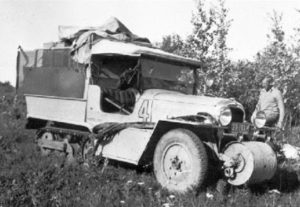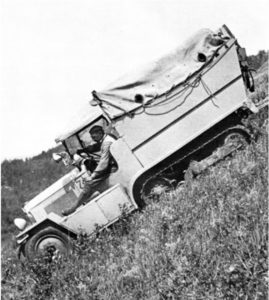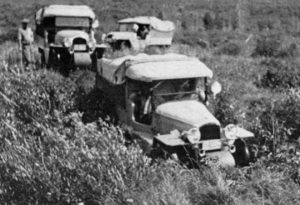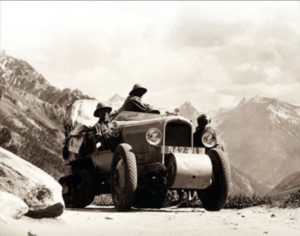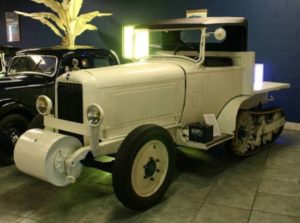More on the Failed La Croisère Blanche Canadian Expedition of 1934
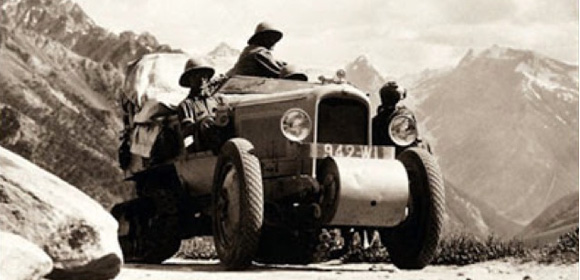
In 2005 we first wrote about the La Croisère Blanche in an article titled “The Champagne Safari” in the 2005 Winter Citroënthusiast. (You can find it in our documents archives section of Citroënvie). It was about the daring 1,200-mile expedition across northern Canada backed to the tune of $250,000 by millionaire Charles Bedaux. To make the 1934 journey, Bedaux brought along five Citroën tanks, 130 horses, kegs of champagne, tons of gourmet French food and a formidable array of talent and beauty, including Floyd Crosby, an Oscar-winning Hollywood cinematographer, two land surveyors, Frank Swannell and Ernest Lamarque, mining engineer Jack Bocock, a Citroën mechanic, many cowboys, as well as Bedaux’s mistress, his wife and her maid.
The Champagne Safari, as it was called, was also the name of a documentary film produced in 1995 by George Ungar. It presents a fascinating portrait of the enigmatic, megalomaniacal American entrepreneur Charles Bedaux, a man who had a tremendous effect on the rise of the Nazis to power. The film includes Crosby’s rare footage, re-enactments, archival photos and interviews.
Then, in our 2009 Winter issue of Citroënvie, we ran a story on the Hudson’s Hope Historical Society’s celebration of the 75th anniversary of the 1934 Bedeaux Expedition. In that article we featured incredible photos discovered from Library & Archives Canada. (You can also find it in our Citroënvie documents archives section).
We are pleased to feature these additional photos of the expedition that were posted by automotive enthusiast Jesse Bowers.
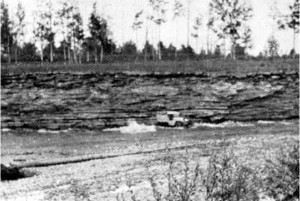 Shot from Crosby’s footage of the Citroen half-track on a sandbar.
Shot from Crosby’s footage of the Citroen half-track on a sandbar.
It started from Edmonton, Alberta on July 6, 1934. Due to a combination of weather, terrain and poor planning, the expedition failed and the Citroën vehicles were abandoned, one by one, some in more dramatic fashion than others. Two trucks slid off 120 foot high cliffs, while the cameras rolled. Another was sent by raft down the river, where it was to meet a carefully planted stick of dynamite. (The shot was ruined when the dynamite failed to go off and the truck floated into a sandbar.) The two remaining Citroens were abandoned at a ranch near Halfway River.
Once the highway opened up the territory in the 1950’s around Telegraph Creek, a Fort St. John, B.C. automotive dealer searched out the abandoned Citroens and using their parts assembled one that he used and eventually donated to the Western Development Museum of Saskatoon in the 1950s.
Jesse also posted some interesting additional information on Charles Bedaux. He was born in France in 1886, moved to the United States and became a naturalized American citizen. He became a millionaire based on his business of management consulting. In 1937 he hosted the marriage of the Duke and Duchess of Windsor at his French chateau. However, collaborationist activities with Nazi-occupied France led to his 1942 arrest in North Africa while overseeing a German pipeline project. He was taken back to the United States on charges of treason, and overdosed on sleeping pills in a Florida prison in 1944.
There is a book, “Bannock and Beans: A Cowboy’s Account of the Bedaux Expedition”, about the expedition told by Bob White, one of the cowboys who worked on Bedaux’s team. White’s reminiscences, recounted in the tradition of the cowboy storyteller, describe the hardships of cutting trails and hauling supplies on horseback, the beauty of the wilderness lands and many of the unique aspects of the expedition.
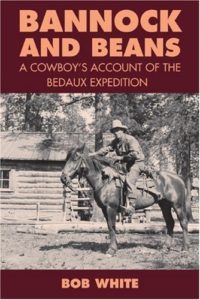 (Available on Amazon: https://www.amazon.ca/Bannock-Beans-Cowboys-Account-Expedition/dp/0772660603 )
(Available on Amazon: https://www.amazon.ca/Bannock-Beans-Cowboys-Account-Expedition/dp/0772660603 )
Bannock and Beans also reveals the complex character of Bedaux, and includes White’s experiences in Bedaux’s attempts to develop a ranch in northern BC after the expedition.
Here is a link offering further info about Bedaux and the expedition:
https://steampunkvehicles.tumblr.com/post/4782714274/from-practicalmachinist-com-the-bedaux-canadian
